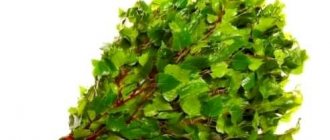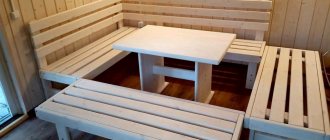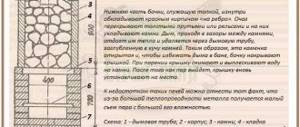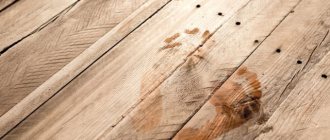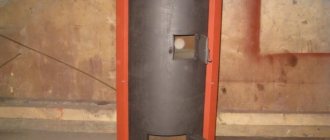A kilt for a bath takes a worthy place in the list of important bath accessories. It is multifunctional and practical, used as a loincloth or liner for shelves in a steam room.
A kilt is an excellent alternative to a traditional bath towel; it adheres well to the body without causing any inconvenience in use. Such an accessory can be purchased ready-made or sewn with your own hands.
What materials are kilts made from?
Since finished products are expensive, it would be more rational to sew a Velcro bath towel with your own hands. Only natural materials are used as a basis, in particular:
- linen;
- cotton;
- terry cloth.
The most important thing is that the skin breathes freely in such clothes, and it, in turn, absorbs sweat well.
Important! Naturally, high-quality terry fabric is not cheap, so many people prefer budget options - waffle cotton fabric. Although it is thinner, it absorbs moisture perfectly. The most important thing is to take into account that waffle fabric quickly gets wet through and through, that is, if you like to alternate a steam room with a jacuzzi or a swimming pool several times, then it is better to abandon this material.
Draw your own conclusions: it’s better not to skimp on buying high-quality fabric, especially if you like to visit such establishments every weekend. All the same, you will save significantly due to the fact that you will do the sewing yourself.
Important! Do not choose beige or white fabric, because it gets dirty quickly.
Public bath kit
Shared saunas usually have swimming pools or plunge pools. In addition to a bathhouse dress, you will also need a swimsuit made from natural fabric such as cotton or linen.
Another essential item there will be a bathrobe, it is advisable to purchase one with long pile, it will be pleasant to the body and quickly absorb moisture.
It is important to know! When wet, such robes become quite heavy and require a long time to dry.
If this turns out to be a problem for you, then an option made from waffle or bamboo fabric is quite suitable, although the cost of the product of the second option will be many times higher.
Who should wear what?
In general, it is impossible to call a bathhouse kilt a purely male item, or a pareo a purely feminine item of clothing. It all depends on the preferences of the person himself.
It is important to remember that both male and female are just a replacement for a towel in the sauna. The towel needs constant fixation, so you can’t enjoy the bath normally. A bath kilt eliminates this inconvenience.
Men's bath clothing is no different from women's. Unless the women's one is a little embellished or has a distinctive design. The same can be said about pareos.
Terry kilt for a bath - the most popular
How to do it yourself?
In fact, anyone can cope with this task, even if they do not have a sewing machine or the proper experience.
First option. For this we will need regular bath sheets. We won’t cut or cut it, we’ll just learn how to tie it correctly. The result should be a so-called toga. It used to be a robe for the ancient Romans and is perfect for visiting the steam room. See the tying diagram below.
Second option. We make a pareo from a large towel. To do this, we need the towel itself, an elastic band and a couple of Velcro. An elastic band must be stitched (or carefully sewn by hand) into the upper back part, which is on the back, so that small ruffles are formed and the product is well fixed. Next, we make a scent and attach Velcro to the ends. All is ready!
Third option. We sew according to the pattern; of course, we can’t do it without additional equipment. You will need:
- The fabric itself;
- Needle and thread or sewing machine;
- Scissors;
- Pattern paper;
- Tailor's pins;
- Sewing centimeter;
- Chalk or a piece of soap.
The first thing you need to do is decide on the pattern itself, you can choose the option below.
Next, we take our measurements; we will need the volume of the chest, hips and the length of the product.
We transfer the pattern onto paper taking into account our measurements and cut it out. Lay the fabric out on a flat surface, wrong side up. Use tailor's pins to secure the pattern. From each edge it is necessary to make an indent of 1.5 - 2 centimeters. We trace the outline and carefully cut it out taking into account the indentation.
Next, we need to baste all the edges and try on the product, if everything is fine, then we can proceed to the last stage - sewing.
As you can see, clothes for saunas and baths are not at all difficult to make; you just need desire and a little effort.
Features of constructing a pattern for a bath kilt
In reality, a kilt is a very simple product, so you won’t have to create any complex patterns. If you are not at all familiar with the word cutting, then it is better to use the most ordinary sheet of paper as a so-called stencil.
Men's kilt pattern
To create a pattern for making a men's bath towel:
- Take a sheet of paper, preferably tracing paper. If it is not there, then you can get by with a piece of unnecessary wallpaper or newspaper.
- On a piece of paper you need to draw a rectangle 120 cm long and 50 cm wide.
That's it, you don't need to do anything else. Then you should buy a canvas of the same size.
Important! Since men's kilts are shorter, they are worn exclusively at the hips. So, if a man is short, then it will be enough to make a kilt measuring 40 cm from hips to knees.
Women's kilt pattern
Here the situation is a little more complicated. To create a pattern, you need:
- Draw a rectangle 120 by 80 cm.
- The bottom edges of the paper should be slightly rounded using a compass.
- The needle is installed in the center of the constructed square, and its side will correspond in size to the radius of the circle.
- The edges need to be cut.
Important! If you want to make pockets on the product, then you definitely need to create a separate pattern. Simply draw a square or rectangle of the desired size, for example, 20 by 15 cm. Small jewelry or valuables will fit into such a small pocket.
Tying methods
Bath pareos usually come with special Velcro, elastic bands and fasteners,
sometimes in the form of a simple rectangular cloth, which is tied under the arms during rest.
But an article has already been published about ways to tie beach pareos in a women’s club.
However, to relax in the bathhouse, everyone usually simply wraps the cloth under their arms. The most comfortable ones are pareos with elastic bands and a great smell.
How to tie a peshtemal in the form of a skirt, dress, or headdress
Peshtemal, as we described in the previous article, its use has long gone beyond the usual textiles for a bathhouse. This is a versatile item that can turn any beach girl into a stylish piece.
You just need to explore several options on how to tie a peshtemal beautifully, i.e. use it as a pareo or sarong.
Benefits of peshtemal as beachwear
1. Peshtemal is a textile made from natural material (cotton), while pareo is most often made from synthetic fabrics.
2. The peshtemal will not stick to a wet or cream-moistened body (unlike a pareo), the folds will be smooth and beautiful.
3. The peshtemal absorbs water perfectly and will not be hot in it.
4. If necessary, the peshtemal will serve as both a bedding for the sun lounger and clothing, so the beach bag will not be heavy.
5. There are many options for tying a peshtemal, which means that a beach outfit can be easily changed even during the day.
Peshtemal as a dress
Dress 1.
We place the peshtemal along the body in front. We tie a knot behind the neck from the opposite ends of the product. We make a similar knot at the back at waist level.
Dress 2. Place the peshtemal behind the back with the short side at the top. We pass the fabric under the arms and tie the ends in front at chest level. We turn the improvised dress so that the slit is on the side. We make another knot on the hips.
You can limit yourself to tying one knot at chest level. You can diversify the style by varying the length of the free ends of the peshtemal.
Dress 3. Another option for a peshtemal beach dress:
— place the canvas with the long side across the body behind the back;
- move forward under your arms;
- Pull the free upper ends up, put them behind the neck and tie them in a knot. Alternatively, twist the ends of the towel into ropes before tying the knot.
The free upper edge can be secured with a hairpin or brooch on the hip.
You can also make an improvised belt, for example, from twine.
Option 4.
A short dress can be obtained as follows:
— place the peshtemal fabric in front with the long side across the body;
- put it behind your back under your arms;
— we also move the upper free ends under the arms in front and tie them in the form of a bodice on the chest.
Peshtemal like a skirt
Making a beach skirt out of peshtemal is very simple:
- place the towel across your back (long side);
- make a knot from the upper opposite ends (either in front or on the side);
- the length of the skirt is adjustable independently (in short, you need to gather the peshtemal, the free ends in the knot will be long; the skirt is longer - do not wrap or fold the peshtemal, the ends in the knot will be short).
Option 1.
Option 2.
Option 3.
For beauty, you can use a ring through which you should pass the ends of the peshtemal and secure them with a knot.
Peshtemal as oriental pants, shorts, overalls
1. You will get an original overalls if:
— place the long side of the towel behind your back, pass the loose ends under your arms and tie a knot at chest level;
- turn so that the knot is behind your back;
- pull the bottom edge of the towel by the corners between your legs behind your back;
— at waist level, bring the ends forward and make a knot.
Depending on the initial length of the peshtemal, the overalls formed in this way can be with trouser legs at the bottom or with shorts.
2. Oriental bloomers made from peshtemal will be obtained if you use the above advice, only first the towel should be fixed not at chest level, but at waist level.
Peshtemal as a top or blouse
Option 1.
You can tie a peshtemal in the form of a top like this:
- the peshtemal cloth is located across the body at chest level in front;
- place the free ends of the upper edge behind the neck, tie it into a knot (depending on how deep you want the neckline, you should “play” with the length of the free ends in the knot. Longer ends mean a smaller neckline, shorter ends mean a deeper neckline);
- Place the loose ends of the bottom edge behind your back and tie at waist level.
Option 2.
For this type of blouse or top, an additional accessory is required - a thick tourniquet around the neck, a fabric neckerchief, or even a headband, but located on the neck:
— place the peshtemal across the body;
— we assemble the canvas “into an accordion”;
— we put one end of the fabric into a tourniquet (bandage) around the neck, tighten it so that the peshtemal is divided in half;
— we form a bodice from the fabric, we place the free edges of the peshtemal behind the back under the arms;
- fix it with a knot.



